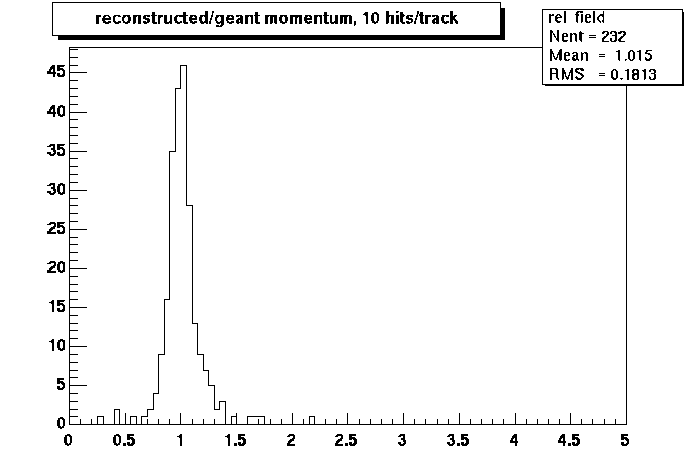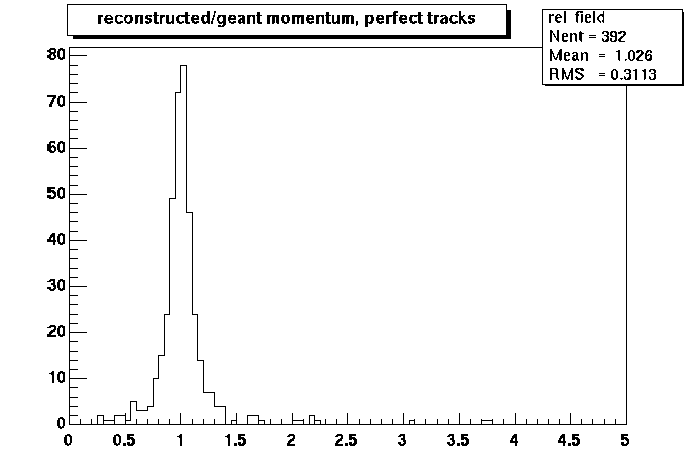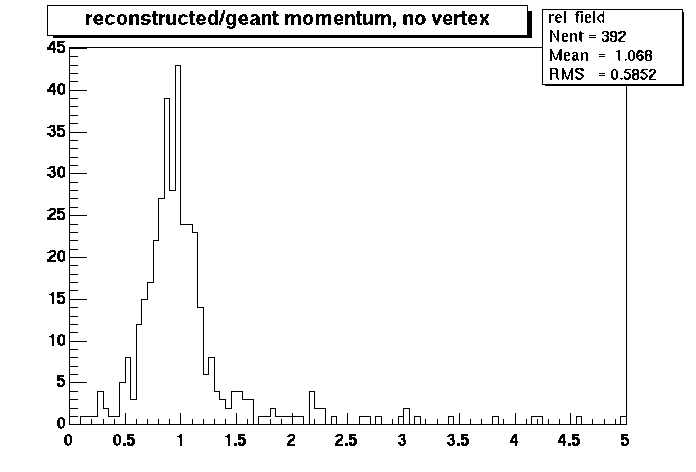
The FTPC track evaluator is implemented in both STAF(fte) and ROOT (as a part of St_fpt_Maker and of StFtpcTrackMaker).
It was written C++ as a wrapper for the StFtpcMomentumFit class by Holm Hümmler.
A new tracker with higher speed and the ability to find non-vertex tracks is currently under development by Andreas Schüttauf. It will also include the momentum fit, thus eliminating fte.
The new momentum fit is a C++ class StFtpcMomentumFit, so it can later be linked into the new tracking routine and the V0 module. It has a multiply overloaded constructor, so it can be called with or without a known vertex position and with or without weights on the individual points. It inherits from the SCL class StPhysicalHelix, so the Helix properties can be used to read the momentum using the magnetic field at (0,0,0) or to extrapolate the track back towards the main vertex. In the more forward parts of the ftpc volume the helix model will not yield ideal fits to the track points because of the field inhomogeneities.
The momentum fit routine makes use of the approximate homogeneity of the field in the sensitive volume (inhomogeneities are less than 3%). As a first guess, a helix is fitted to the points to determine a momentum hypothesis. This hypothesis is then extrapolated through the measured magnetic field and the difference of this extrapolation to the helix is subtracted from the fitted point positions. Fitting a helix to these distorted positions then yields a very good estimate of the actual momentum. Extrapolating this momentum through the field gives points that are usually less than 10um from the fit to the original points.
The following histogram shows the ratio of the reconstucted momentum to geant momentum for all the tracks in one event that were properly reconstructed by fpt with 10 hits on the track, all of which are from the same geant track. The simulation was done with the fast simulator. The RMS of the distribution of 18% is below specifications (for reasons that are yet to be determined) but still considerably better than can be achieved on the same event using fte. About 2% are contributed by the single outlier at 2.

The same event, but without the 10hit cut. Almost all the additional rms is contributed by the few extreme outliers. It is still required that all hits are from the same geant track. Ghost tracks made up of several track fragments are usually measured with a too small momentum and can possible be rejected with a combined momentum/chi2 cut.

The same event, fitted without a vertex constraint.

This page was created by Holm Hümmler on July 29, 1999 and updated by Janet Seyboth on May 31, 2000